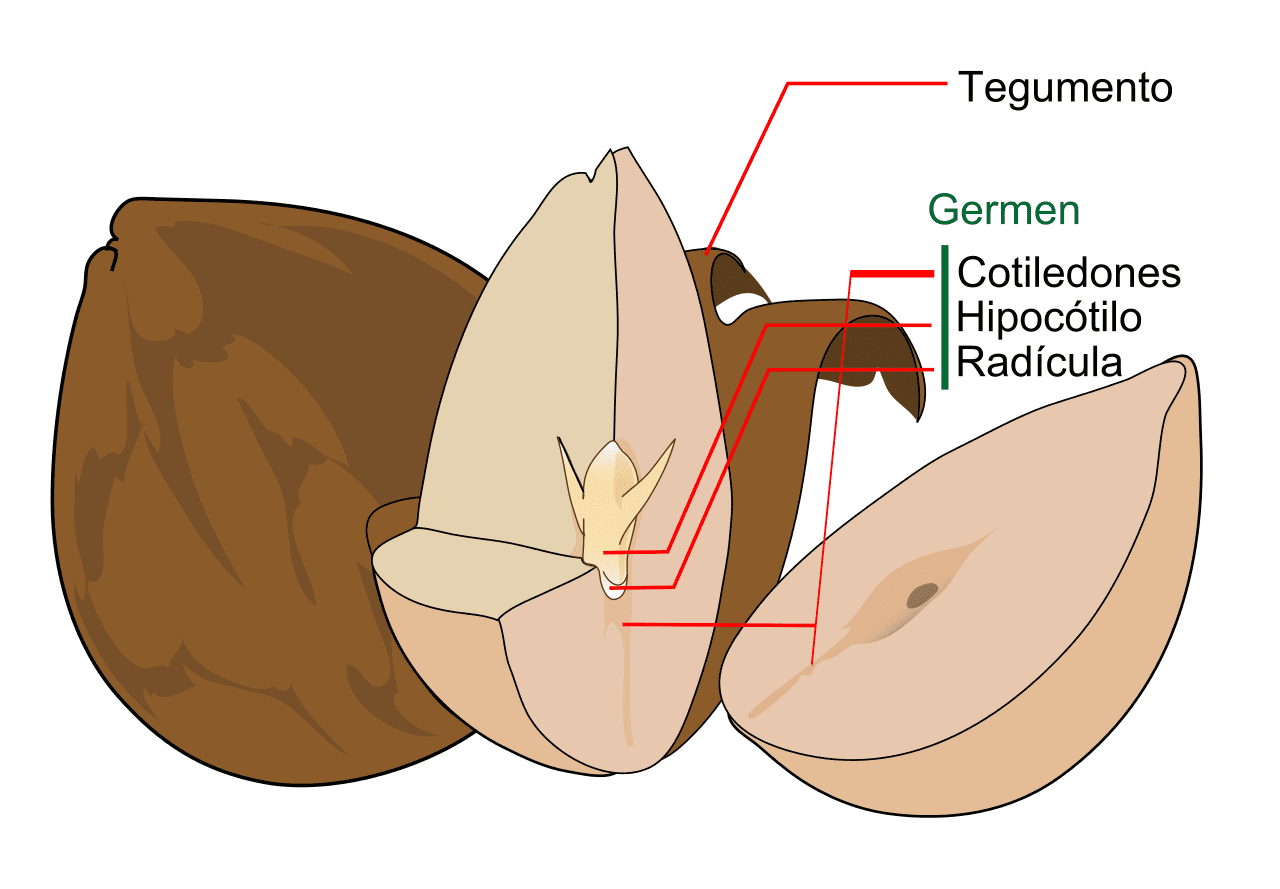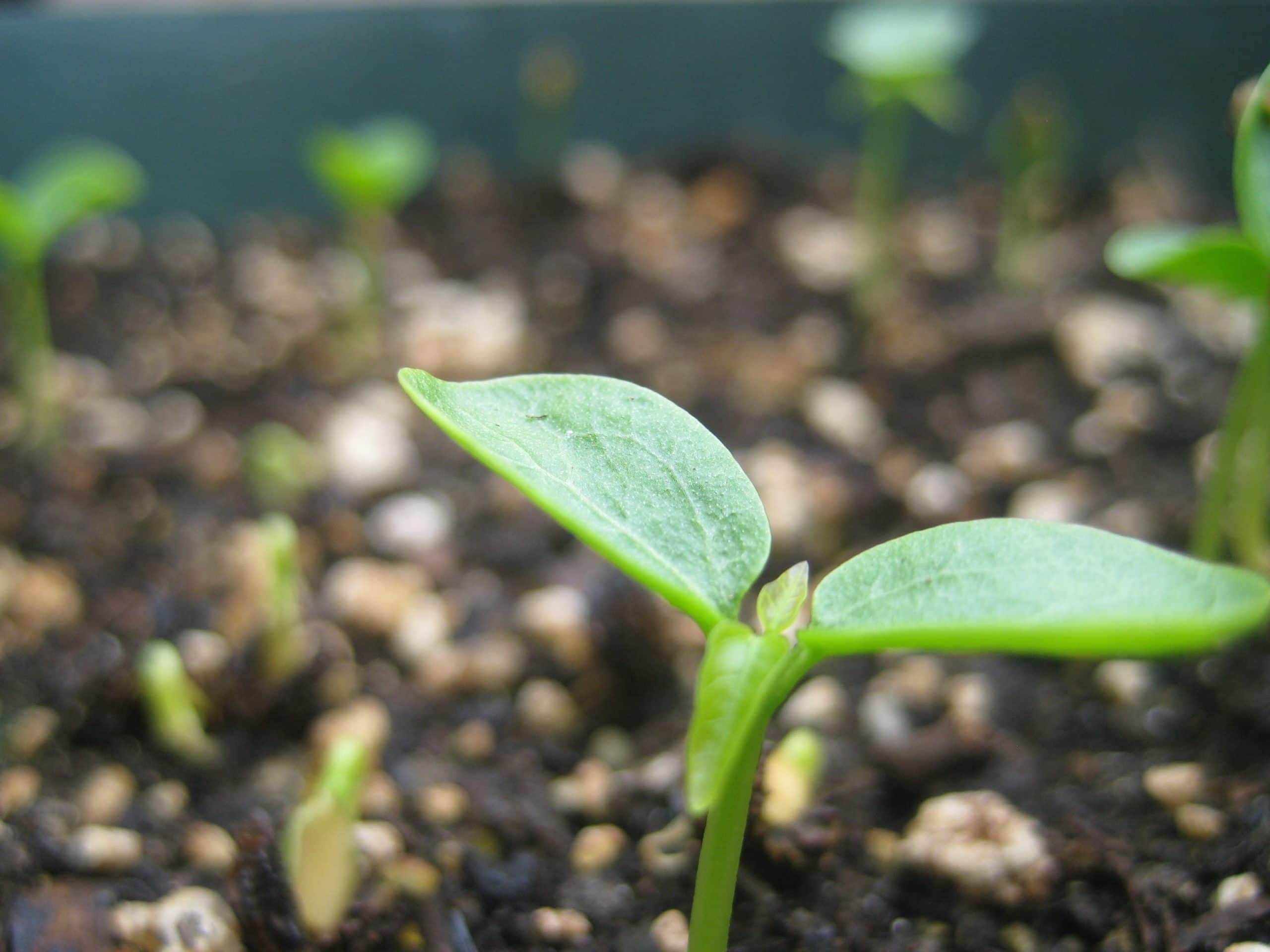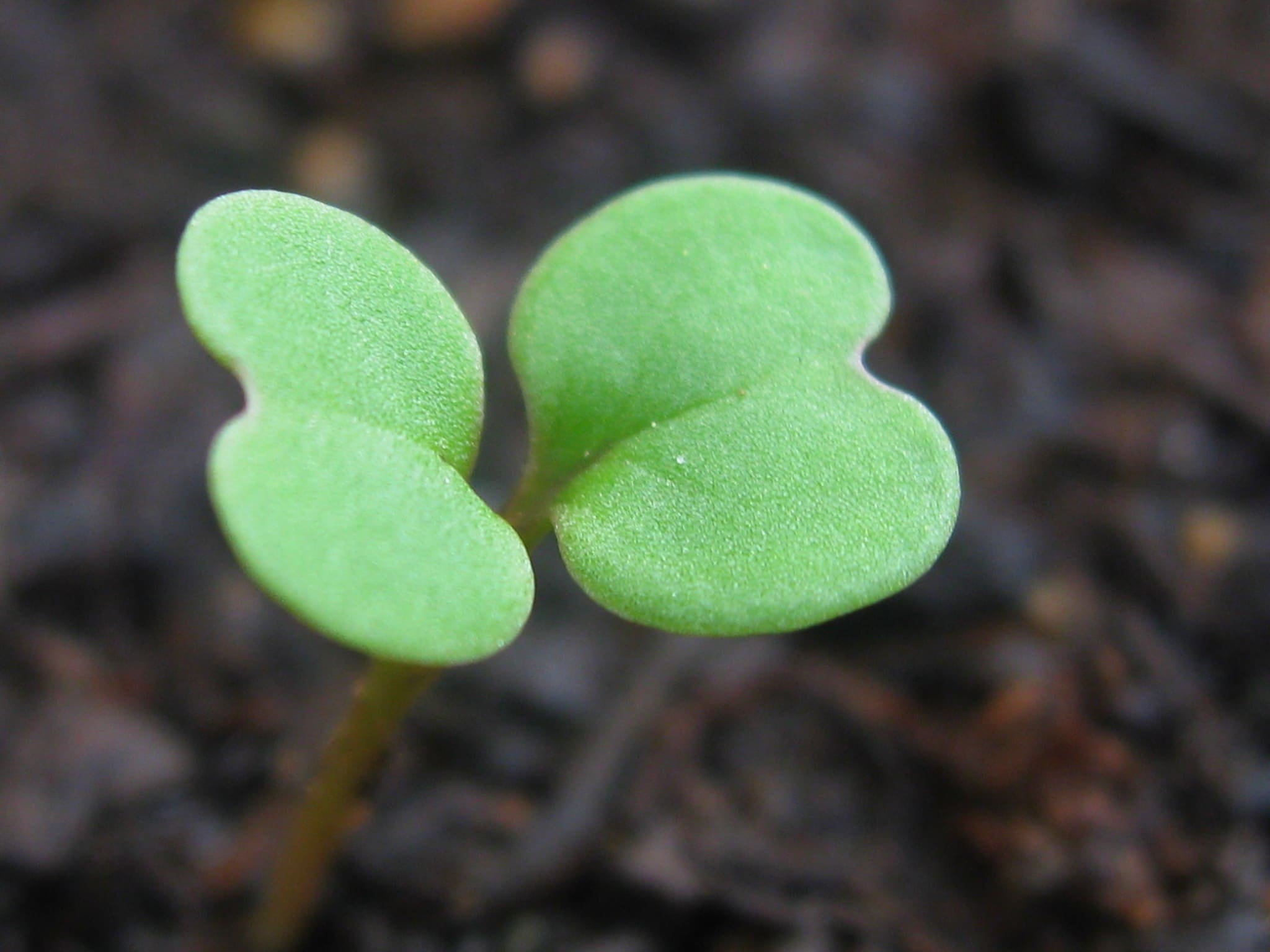
Parts of an avocado seed.
Every time a seed germinates we can get a very interesting surprise when the first leaves appear since they will not have the shape they are supposed to have. These flakes are known by the name of cotyledons or embryonic leaves and they have a very important function.
In fact, without them neither the tallest tree nor the smallest grass could exist. Do you know what cotyledons are? Not? Don't worry: after reading this article you will know 🙂.
What are cotyledons?

Seedling of Carica papaya
From the first moment the embryo is formed inside the seed, the cotyledons also begin to mature. These first leaves will grow with the energy reserves stored in the seed, so once said seed stops being fed by the mother plant, will spend the energy of its cotyledons.
The life of these is very short: as soon as the seedling has its first true leaves they will begin to dry since they will have exhausted their reserves. In addition, from that moment the new plant will be able to make food by itself.
Depending on where the cotyledons develop, two types of plants differ: epigeal, which are those that have them off the ground, or hypogea, which are those that have them underground. In both cases they fulfill the same function: to feed the seedling until it produces the first leaves.
However not all plants have the same number of cotyledons. The palms, grasses, Orchids and the bulbous ones only have a single cotyledon, which means that they are monocotilédoneas; on the other hand, the rest of the plants are dicotyledons (two cotyledons).
How to take care of the seedlings when they still have the cotyledons?
The beginning of the life of plants is complicated, since they are very vulnerable to pests and microorganisms that cause diseases, apart from inclement weather. That is why it is very important to be aware of them, and provide them with the following care:
Location

Image - Flickr / Ruth Hartnup
There are plants that want to be in the sun from the first moment, but there are others that are semi-shady. Knowing the light nonsense that we are cultivating is one of the most necessary things to do before sowing them.. Sometimes it is the case that, for example, you plant a cactus in semi-shade and then you want to go out into the sun,… and when you do, it burns. Why?
Well, because in those cases you have to get used to the little plants little by little and gradually, always avoiding the midday sun.
Species that can be sown in the sun
There are many who want and need sun from day one, like these:
- Succulents (cacti, and many succulents except Gasteria, Haworthia, and Sempervivum)
- Plants such as olive trees, almond trees, wild olive trees, myrtles, lavender, etc.
- Aromatic plants, such as parsley or rosemary
- Many palm trees, such as those of the genus Phoenix, washingtonia or Chamaerops
- Horticultural plants, such as tomatoes, peppers, cucumbers, watermelons, or melons
Semi-shadow species
Although there are few compared to the sun, it is convenient to know them:
- ferns
- Orchid
- Begonias
- Shrubs like hydrangeas, gardenias or camellias
- Trees like arces and beech
Irrigation
The substrate of a seedbed must remain moist, but not flooded. Whenever possible, rainwater or lime-free will be used, although if they are plants of Mediterranean origin (olive trees, wild olive trees, almond trees, carob trees, etc.), if the water has some lime it will not harm them.
Subscriber
While they have the cotyledons, it is not advisable to fertilize them, since the plants feed on the reserves of said leaflets. But when you see that they begin to wither, you can start with the fertilizer for example with liquid guano (for sale here), following the indications specified on the package to avoid problems.
Preventive treatments
With the sole purpose of getting the seedlings to grow well, it will be necessary to perform some preventive treatments:
Against pests
Insects generally love young shoots, and there is nothing more tender than a newly germinated seedling. A simple bite on the stem is enough for us to lose it, so do not hesitate for a moment to keep the seedlings well protected, for example by sprinkling diatomaceous earth around it (for sale No products found.), or with mosquito netting (this is especially useful in hot, dry places, which are a favorite with locusts and grasshoppers).
Against diseases
Fungi can kill seedlings in no time. To avoid it, they should be treated with fungicides, or copper or sulfur sprinkled on the ground from time to time (every 15 days approximately) in spring. In this way, they will have a better chance of continuing to grow.
Transplant

When should a seedling be transplanted? It depends a lot on the species and the conditions of the place where it is being grown, but in principle it will be transplanted when:
- roots grow out of drainage holes,
- has spent more than two years in the same pot,
- be about two inches tall.
I hope it has been useful to you 🙂.
I liked the explanation. I'm going to study it. I'm working on building a family theft
We're glad you liked it. All the best.
Hello Monica!
Greetings, I loved your blog but I had some small questions that I hope you can answer me.
I would like to know the difference between the cotyledons of eudicotyledonous and monocotyledonous plants.
That is, I already know that monocots have only one cotyledon and eudicots have two, but I would like to know if there are more differences at the cotyledon level.
I also wanted to ask if there are plants with more than two cotyledons.
Thank you very much.
Hello Andres.
You have all the information in this article.
Regarding your last question, it may be the case, but it is not, let's say, "natural." If a plant has three cotyledons, it is because there has been a problem at the genetic level; Although that does not mean that he is going to die for it, but that it is simply not the usual thing.
A greeting.